
They gathered in the predawn dark. Blearyeyed children squirmed. Adults lugging babies and backpacks stood at attention as someone working under the command of Colombia’s most powerful drug cartel, the Gulf Clan, shou ted instructions into a megaphone, temporarily drowning out the cacophony of the jungle’s birds and insects:
Make sure everyone has enough to eat and drink, especially the children. Blue or green fabric tied to trees means keep walking. Red means you’re going the wrong way and should turn around.
Next came prayers for the group’s safety and survival: “Lord, take care of every step that we take.” When the sun peeked above the horizon, they were off.
More than 600 people were in the crowd that plunged into the jungle that morning, beginning a roughly 70-mile journey from northern Colombia into southern Panama. That made it a slow day by local standards. They came from Haiti, Ethiopia, India, the Democratic Republic of the Congo, Brazil, Peru, Ecuador, and Venezuela, headed north across the only strip of land that connects South America to Central America.
The Darién Gap was thought for centuries to be all but impassable. Explorers and would-be colonizers who entered tended to die of hunger or thirst, be attacked by animals, drown in fast-rising rivers, or simply get lost and never emerge. Those dangers remain, but in recent years the jungle has become a super highway for people hoping to reach the United States. According to the United Nations, more than 800,000 may cross the Darién Gap this year—a more than 50 percent increase over last year’s previously unimaginable number. Children under 5 are the fastest-growing group.
Denne historien er fra September 2024-utgaven av The Atlantic.
Start din 7-dagers gratis prøveperiode på Magzter GOLD for å få tilgang til tusenvis av utvalgte premiumhistorier og 9000+ magasiner og aviser.
Allerede abonnent ? Logg på
Denne historien er fra September 2024-utgaven av The Atlantic.
Start din 7-dagers gratis prøveperiode på Magzter GOLD for å få tilgang til tusenvis av utvalgte premiumhistorier og 9000+ magasiner og aviser.
Allerede abonnent? Logg på

'Lord, Help Us Make America Great Again' - A close reading of Trump-rally prayers
A week before Christmas, an evangelical minister named Paul Terry stood before thousands of Christians, their heads bowed, in Durham, New Hampshire, and pleaded with God for deliverance. Th e nation was in crisis, he told the Lord— racked with death and addiction, led by wicked men who “rule with imperial disdain.”
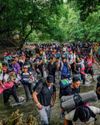
Seventy Miles in the Darién Gap - The Impossible Pad to America - I went to the Darién Gap in December with the photographer Lynsey Addario because I wanted to see for myself what people were willing to risk to get to the United States.
I went to the Darién Gap in December with the photographer Lynsey Addario because I wanted to see for myself what people were willing to risk to get to the United States. Before making the journey, I spoke with a handful of journalists who had done so before. They had dealt with typhoid, rashes, emergency evacuations, and mysterious illnesses that lingered for months. One was tied up in the forest and robbed at gunpoint. They said that we could take measures to make the journey safer but that ultimately, survival required luck.
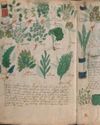
An Intoxicating 500-Yearold Mystery - The Voynich Manuscript has long baffled scholars-and attracted cranks and conspiracy theorists.
The Voynich Manuscript has long baffled scholars-and attracted cranks and conspiracy theorists. Now a prominent medievalist is taking a new approach to unlocking its secrets.
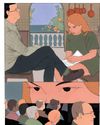
Pity the Bad Man
A bold new novel invites the reader to consider the plight of the bullies and the boors.
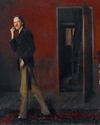
The Wild Adventures of Fanny Stevenson
Her surprising marriage to Robert Louis Stevenson changed literary history.

Does the World Need a Great American Biracial Novel?
The hero of Danzy Senna’ new satire is trying, and failing, to write one.
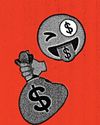
How Greed Got Good Again
In HBO's Industry, Gen Z reveals itself to be just as moneyobsessed as the corporate raiders of Wall Street.
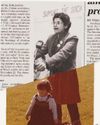
My Mother the Revolutionary
She cared about saving the world more than she cared about me.

HOW M. NIGHT SHYAMALAN CAME BACK FROM THE DEAD
The filmmaker weathered some of the wildest hype and harshest backlash that Hollywood has to offer. Then he found a different path.
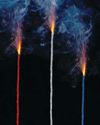
AMERICAN FURY
For years, experts have warned of a wave of political violence. We should prepare for things to get worse before they get better.